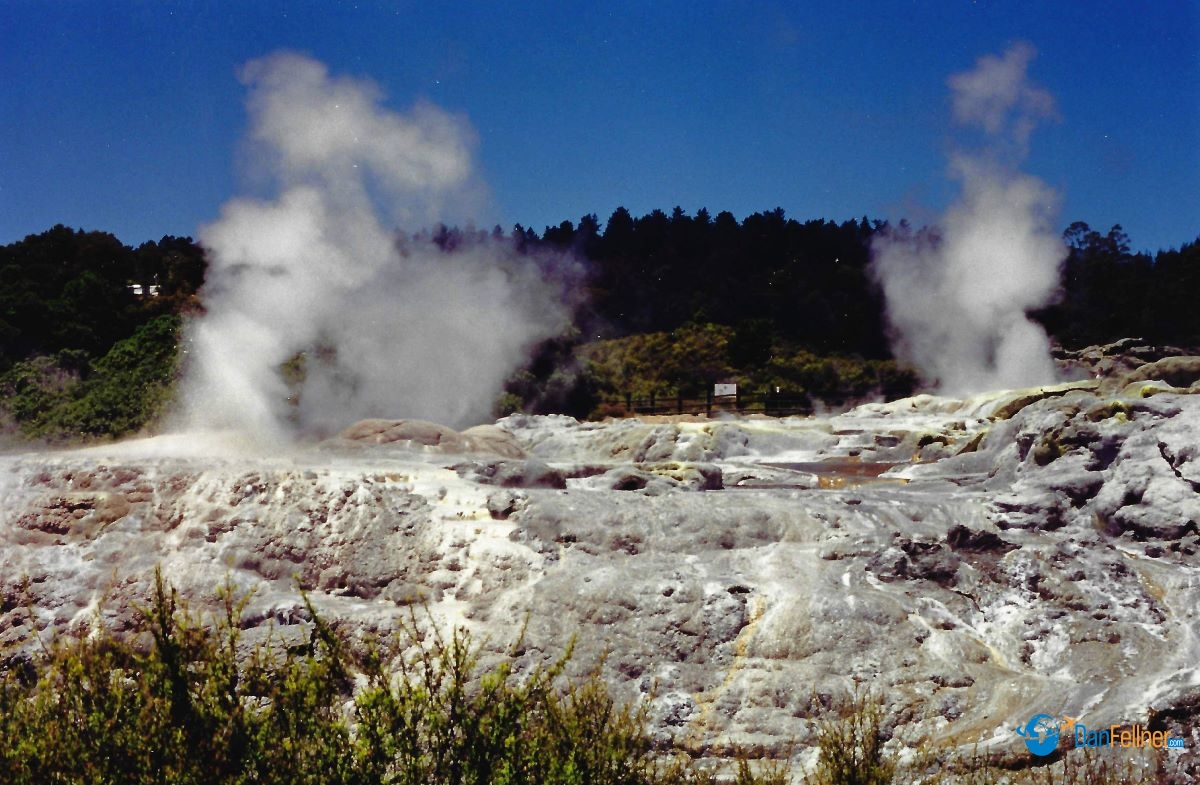East Valley Tribune – April 18, 1999
ROTORUA, New Zealand – Rotorua smells.
Visitors to this New Zealand city located in the heart of the country’s North Island are greeted with the powerful scent of sulfur caused by the area’s intense thermal activity. The smell varies in strength, depending on the wind, time of day and proximity to the city’s numerous geysers, mud pools and steam bores. But like the sheep grazing on the surrounding farmlands, it is always there.
Still, more than 1.2 million tourists happily endure the odor each year, making it one of New Zealand’s most popular destinations. For Rotorua rewards its visitors with a dazzling array of scenic attractions, fascinating culture and welcoming locals.
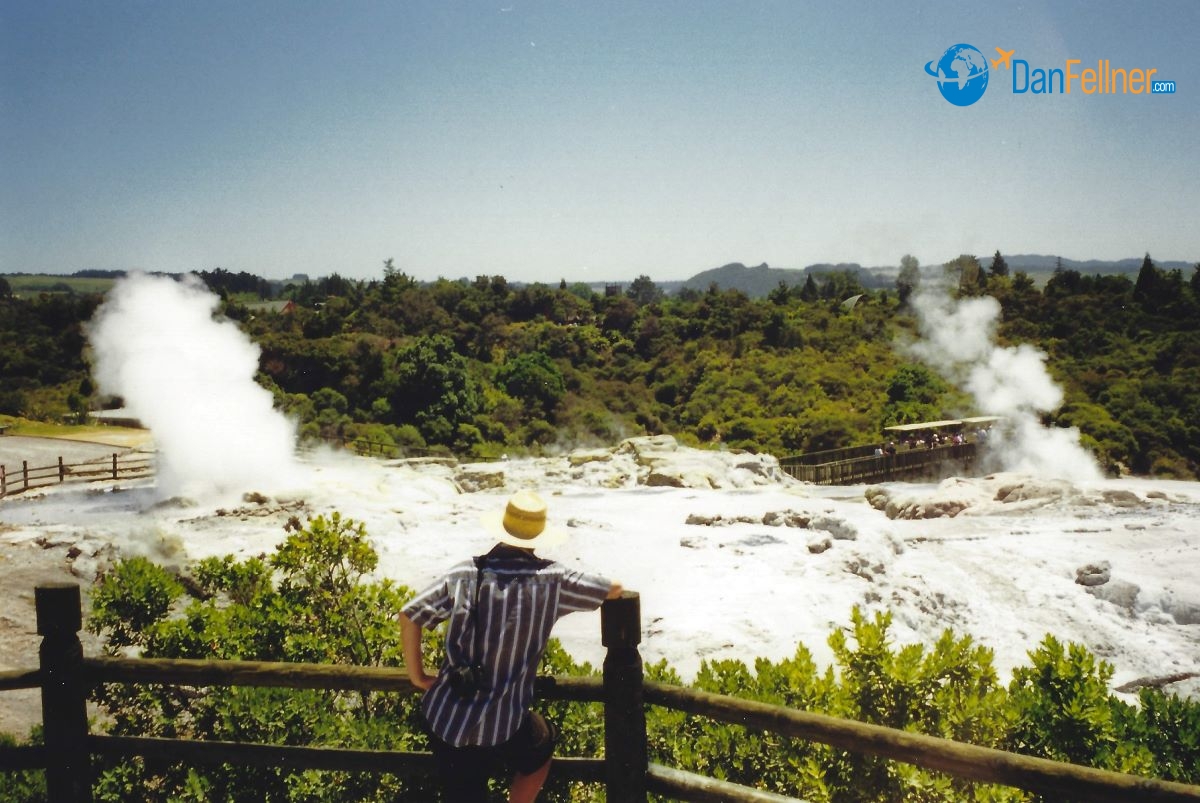
A viewing platform at the Whakarewarewa Thermal Reserve in Rotorua, New Zealand.
Spend a couple of days here and it’s not hard to figure out why readers of Travel & Leisure voted Rotorua number 10 a couple of years ago in a poll of the top 10 cities in the world.
In short, it is one of the most worthwhile stops in one of the most tourist-friendly countries in the world.
The city of about 65,000 residents is located on the shores of Lake Rotorua, which fills a volcanic crater and is the largest of 15 lakes in the area. Rotorua bills itself as a “geothermal wonderland.” Indeed, there’s more smoke and steam coming out of the ground than a tacky Vegas floor show.
The best place to see it all is the Whakarewarewa Thermal Reserve, located within walking distance of most of the town’s hotels. “Whaka,” as it’s more commonly called, is a sprawling field of geysers, pools and simmering mud cauldrons, where legend has it Maori warriors boiled the heads of their enemies.
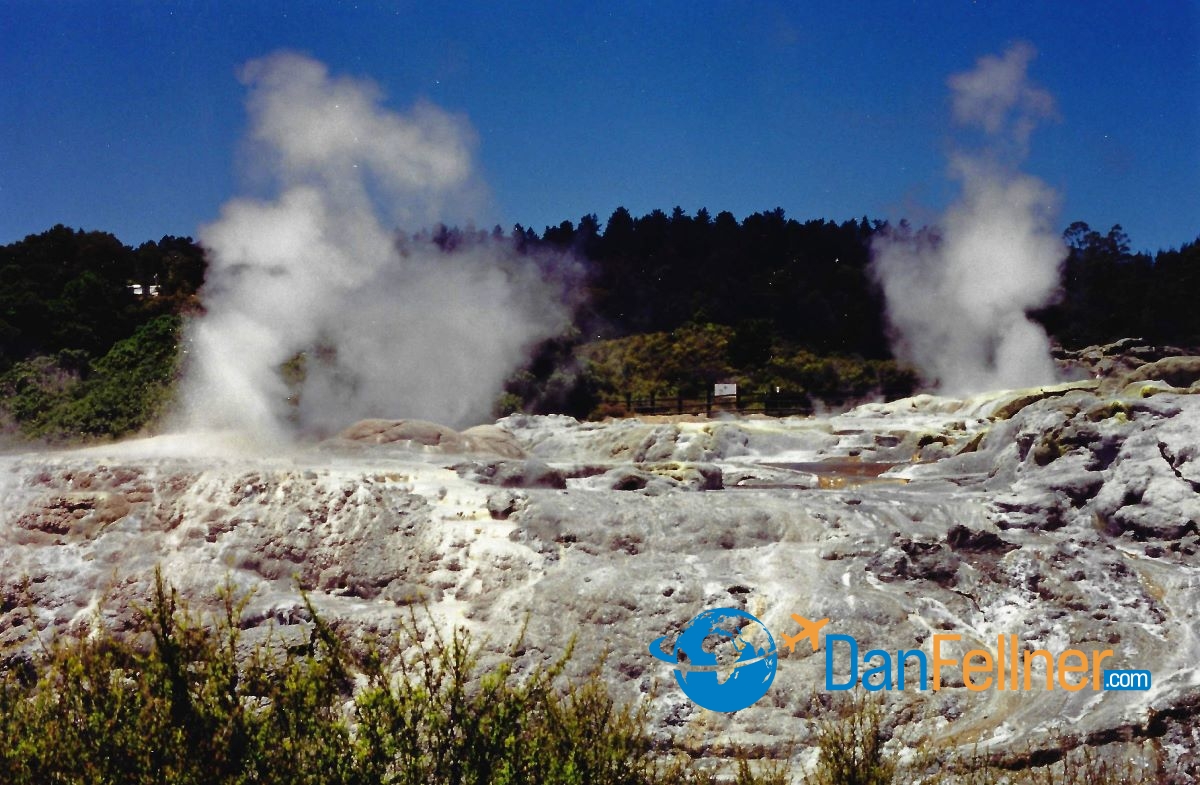
Rotorua is known for its intense thermal activity and the heavy scent of sulfur gas.
There are eight active geysers, some of which shoot water and steam more than 100 feet into the air. They perform for visitors several times an hour, making the place a photographer’s paradise. But get too close to one of the eruptions and you’ll get soaked.
A path runs through the park; visitors are warned not to stray because the ground in the area is dangerously hot. Even the wood rails in front of the geysers are at times too hot to lean against. And yes, Whaka reeks of sulfur, making you wonder why they don’t sell nose plugs at the gift shop.
The thermal park is connected to the New Zealand Maori Arts and Crafts Institute. The Maoris, a Polynesian people, began arriving in the country about 1,000 years ago and now make up about 10 percent of the population. Many live in and around Rotorua. Disputes over land continue to this day with the Pakehas, or Europeans, and racial tensions between the two groups have been escalating in recent years.
But all is serene at the Arts and Crafts Institute, where visitors are greeted with a formal Maori welcome in which you rub noses with your Maori guide. It’s explained that the ritual symbolizes two people’s breath of life coming together in friendship. (Remember to remove your hat first – the bill of my baseball cap poked my Maori greeter in the forehead).
The Institute was created by the government in 1963 to preserve and showcase the Maori’s unique arts and crafts. Inside, there’s a pre-European Maori village and carving and weaving demonstrations. Maori children are selected to come here from all over the country as apprentices to master artisans.
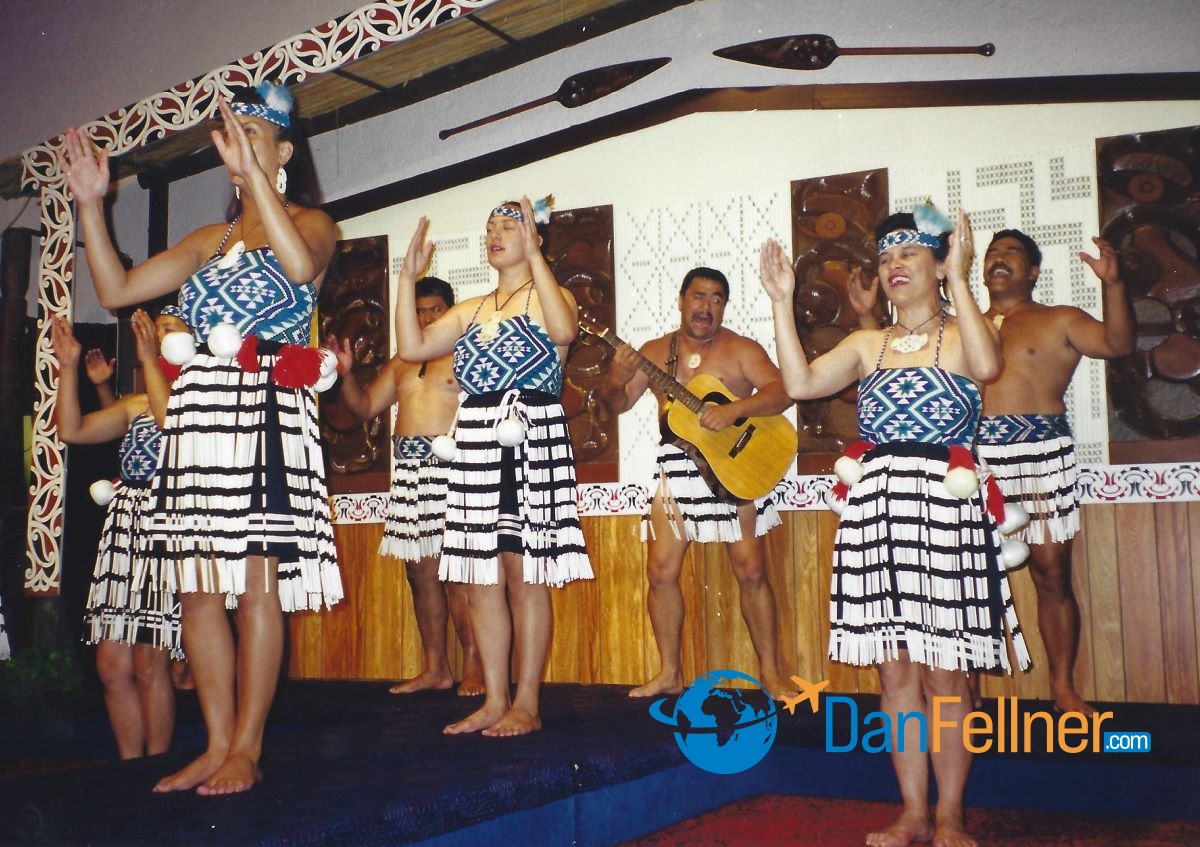
A hangi feast in Rotorua showcases Maori culture.
For the best glimpse of Maori culture, about $30 will get you into a Maori hangi, or feast. It’s touristy – not to the point of being slick — but good fun. They’re held at Whaka, several Rotorua hotels and in small Maori villages in the countryside.
The food is cooked in the traditional Maori way using steamboxes and natural hot water pools. The buffet includes chicken, fish, lamb (there’s always lamb on the menu in New Zealand!) and steamed vegetables.
The real fun begins after supper. After the room of mostly Japanese and Australian tourists clean their plates, a menacing Maori warrior enters the room, starts waving a spear, sticking out his tongue and making other intimidating gestures, as if he’s a spurned lover on the Springer show.
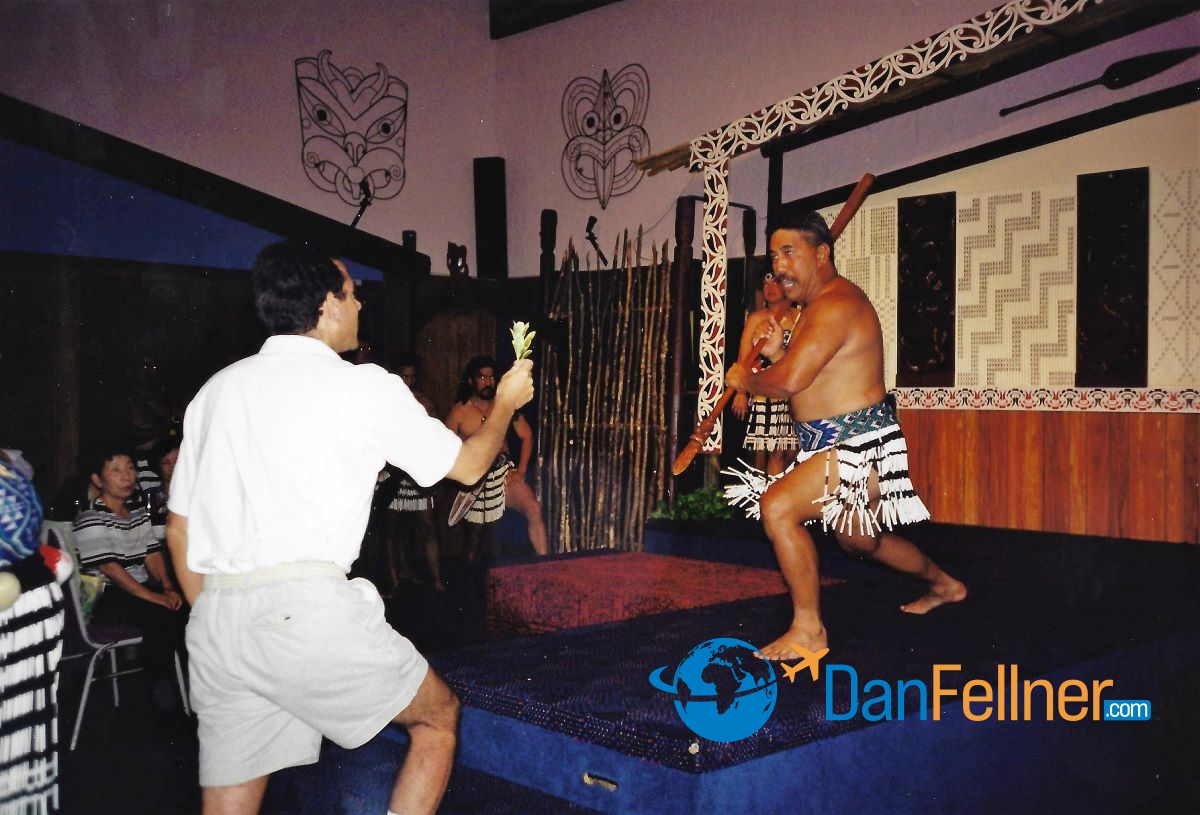
The author presents a gift to a Maori warrior at a hangi in Rotorua, New Zealand.
Sitting in the front row (and because I’m a man), I am asked to approach the stage. The warrior throws a leaf at my feet. Our hangi hostess, Whariki (pronounced far-a-kee), explains that traditionally, when visitors arrived at a Maori village, they were challenged by the bravest warrior to see if they came in peace or in war. Pick up the leaf, I’m told, and it means we came in peace. Trample it or throw it away and it’s time to do battle. I picked it up. I wanted dessert.
Formalities completed, what followed was a fascinating Maori cultural show, including singing, dancing and poi ball twirling. One of the performers explained the significance of every element, making it both insightful into Maori ways and entertaining. And yes, there was dessert of kiwifruit and pastries.
Another must-see attraction in Rotorua is the Agrodome Sheep Park. There are 50 million sheep in New Zealand – that’s 15 sheep for every man, woman and child. Hard to believe, but 10 years ago there were twice as many sheep in the country, but prices for wool and mutton have been slumping and the industry is in decline.
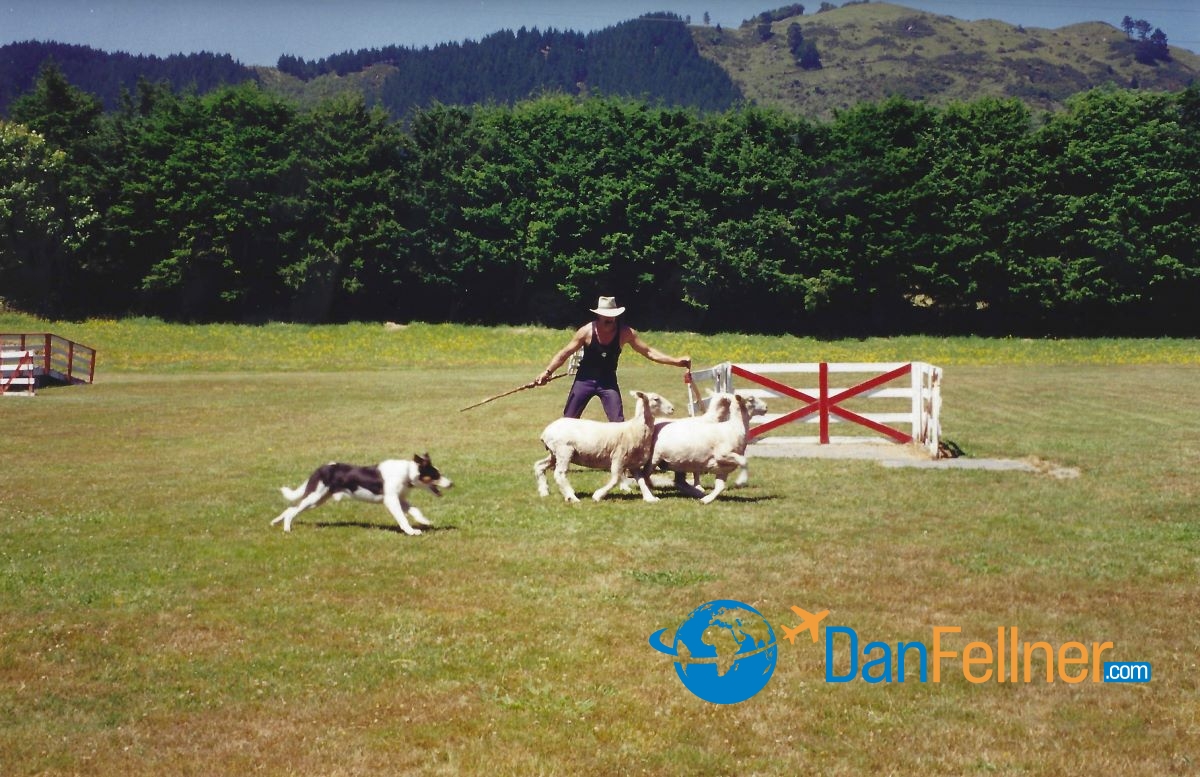
A sheepherding demonstration at Rotorua’s Agrodome.
The Agrodome features a 60-minute show in which 19 different species of sheep are showcased on stage. There’s a shearing demonstration and an opportunity to be photographed with your favorite Merino, Romney or Hampshire.
While the sheep get top billing, the real stars of the show are the sheep dogs. Outside the arena, a shepherd uses an intricate system of whistles and voice commands to instruct a sheep dog to chase three lambs through an obstacle course. The show reinforces a couple of stereotypes – sheep are stupid; dogs are smart.
Bungy jumping was invented in New Zealand and there’s an opportunity for thrill-seekers right outside the Agrodome. In fact, there are bungy-jumping stations throughout the country, some set scenically above mountain rivers and lakes.
It costs about $60 to jump, although our guide quipped that we could jump for free, “no strings attached.”
Rotorua also boasts mountain luging, volcano tours and rafting over one of the highest commercially-rafted waterfalls in the Southern Hemisphere.
For those interested in a more tranquil activity, you can wander through the underground Waitomo Caves, about a two-hour drive west of Rotorua. The highlight is a boat ride through a “Glowworm Grotto,” a starry wonderland lit up by tiny insects. Bring a sweater but not a camera — they don’t allow photography in the caves because flashbulbs dim the light created by the glowworms.
Rotorua, like the rest of the country, is fairly inexpensive for travelers. The trusty McDonald’s price-index bears this out – it’s one of the few developed countries where a Big Mac, fries and drink costs less than at home ($5 N.Z.; about U.S. $2.75, tax included).
But the best value can be found in local establishments, which offer excellent seafood, steaks and, of course, lamb, for reasonable prices. For a quick lunch, meat pies, often homemade and stuffed with a variety of fillings, are wonderful and cost less than $2.
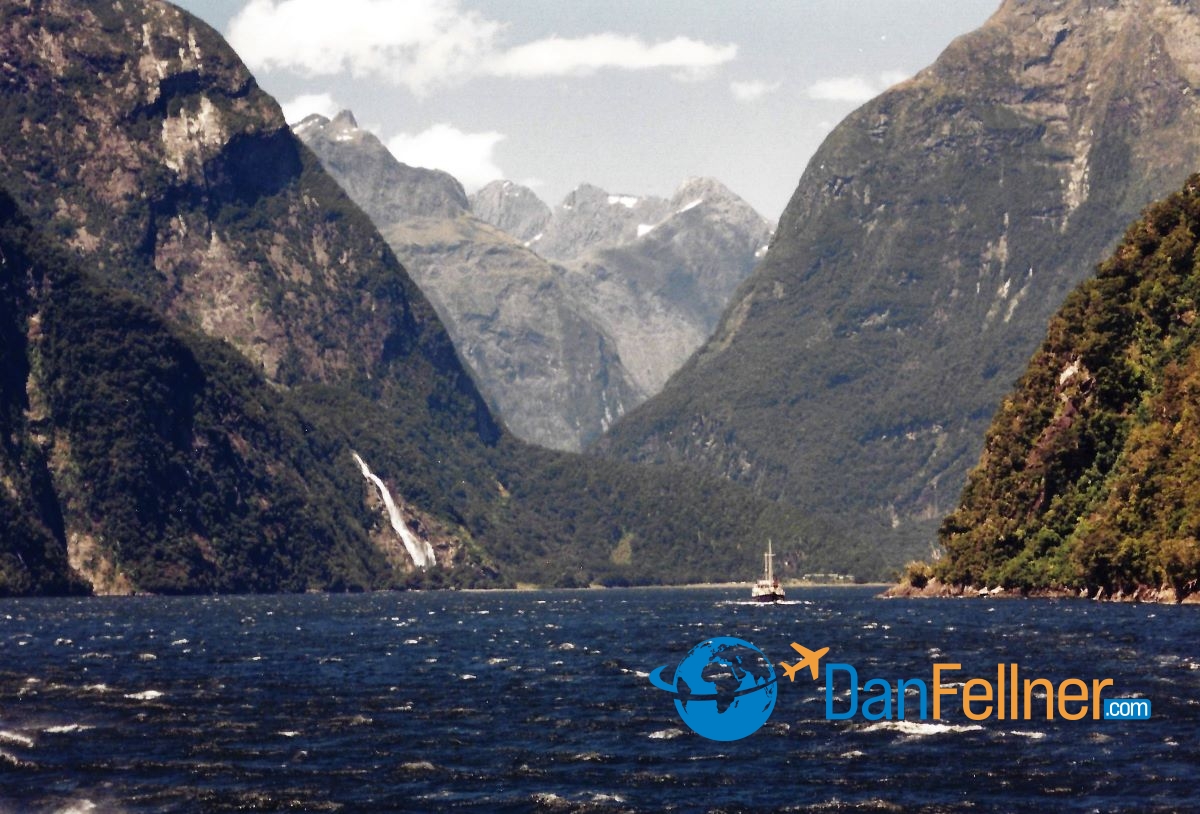
Milford Sound on New Zealand’s South Island.
Two factors keep dining costs down. Many restaurants are “BYO,” which means you can bring your own wine as long as you pay a $1 “corkage fee.” Once you realize there’s no stigma attached to carrying a brown-paper bag into a restaurant (the locals all do it), it becomes an easy way to save a few bucks. A reasonably good New Zealand-produced Chardonnay can be had for $5 or $6 at a local supermarket. Also, tipping is almost unheard of in New Zealand. The price on the menu is what you pay – tax and tip are always included.
Hotels also are quite affordable and easy to find. Rotorua’s “Motel Mile” on Fenton Street features dozens of places to bed down, most offering rooms for less than $50 per night. Many even include private spas where you can relax in therapeutic mineral waters. On a recent summer night (seasons are reversed in the Southern Hemisphere), at the height of the country’s tourist season, only a couple of motels displayed “no vacancy” signs.
Your first taste of New Zealand is likely to be Auckland, about a 12-hour flight from Los Angeles. It’s the country’s largest city with just over a million people, about one-third of the country’s population. From Auckland, getting to Rotorua is easy. It’s a three-hour drive and if you don’t want to rent a car and have to deal with driving on the left side of the road from the right side of the car, there are buses leaving at all times of the day.
I arrived in Auckland with 10 days to spend at the busiest time of the summer tourist season, with hotel reservations for only the first two nights in Auckland.
No problem. I was directed to a government-sponsored Visitor Information Bureau, one of about 80 in the country, where they give unbiased travel advice and even make bookings.
I chose an eight-day independent tour, originating in Auckland, which took me to many of New Zealand’s top attractions on both the North and South islands. New Zealand is not large – about the same size as Japan – and it’s easy to cover a good chunk of the country in a relatively short time period.
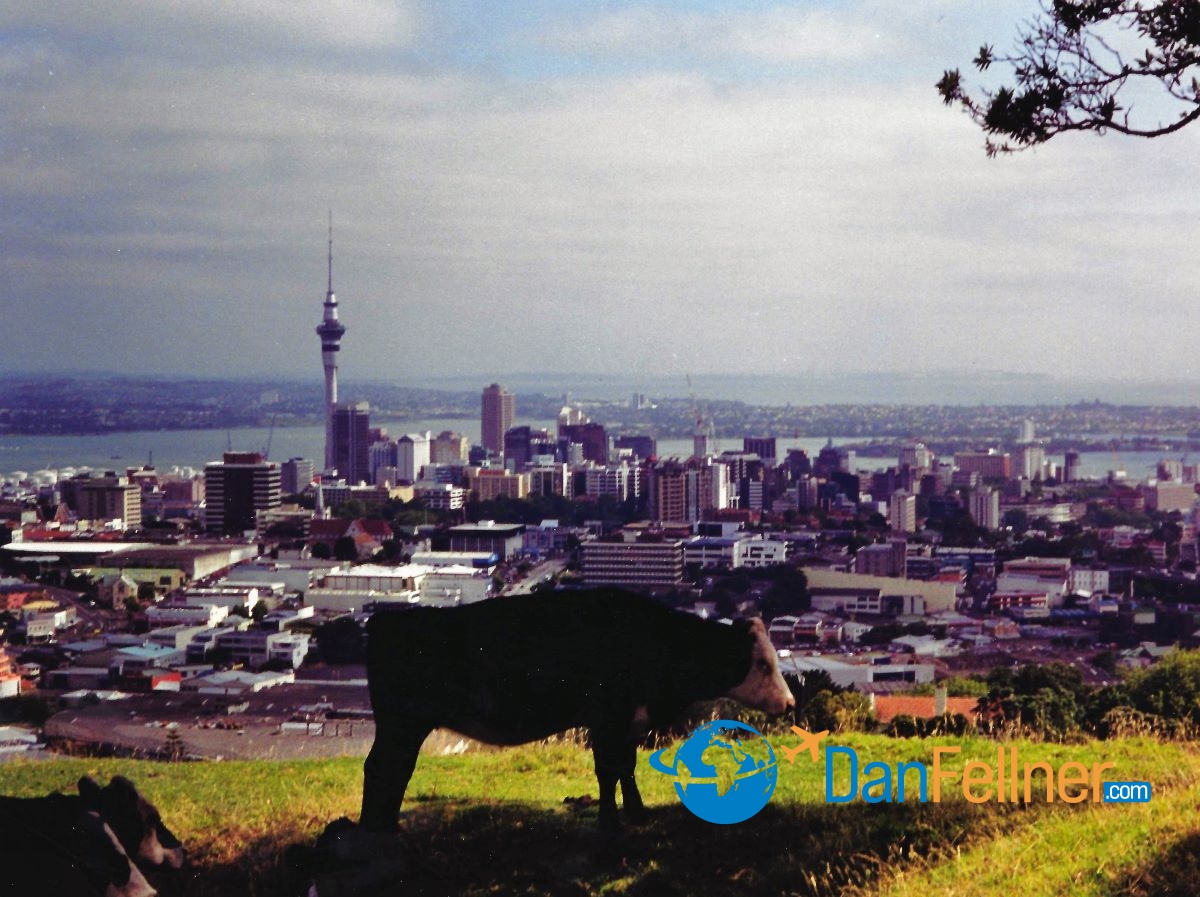
Auckland, New Zealand, the country’s largest city with a population of about 1.5 million.
My tour included seven-nights accommodations, several sightseeing tours, featuring a cruise on the Milford Sound and visit to Mt. Cook, New Zealand’s highest mountain, and all transportation — via bus, train and a scenic three-hour ferry trip between the two islands. They even threw in a one-way Air New Zealand flight from Christchurch on the South Island back to Auckland. Total cost: $550 per person. Not bad for a tour booked only 36 hours in advance.
But it was Rotorua, with its exploding geysers, steaming landscapes, and insight into the Maori culture that made the best impression.
Even if it isn’t the sweetest-smelling place, the other senses are more than compensated.

